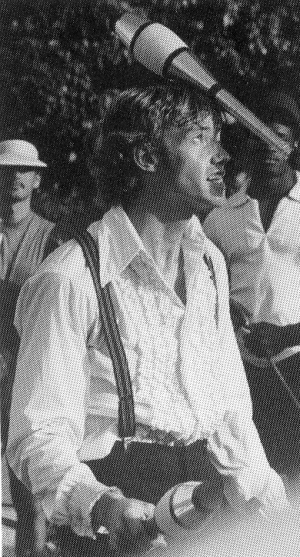
Kit Summers on the street in 1979 (photo K. Summer) |
Page 14 Summer 1990
|
Edward
Jackman remembers when he started in
He
began performing at age 15, and one of his regular haunts was the
theatre lines in Westwood with his friend Daniel Rosen, who has also
gone on to greater things. Conditions were not ideal, he recalled.
"Westwood was guerilla warfare more than anything else,"
he said. "You were standing between two parked cars just off
the sidewalk because you couldn't block the sidewalk. Hare Krisnas
came by and tried to chase you out, then buses would come by in the
middle of your show and you'd have to scream to be heard."
He
found more pleasant conditions in stretch
for better technique and audience rapport. Nizer remembered seeing
Wiles juggle five clubs while bouncing on a slack rope to keep two
hoops on it spinning in opposite directions. That's a tough act to
follow!
Even
the famous juggler Dick Franco started on the streets. Before his
first big tour with a circus, he traveled to
This duo inspired Kit Summers and Jon Held to try their hands (and hats) in the park, thereby launching two other distinguished juggling careers. Jackman explained, "Since we were in the same place with many of the same people every week, I didn't want them to see the same thing every time. Working there for me made me stretch for new material to entertain the other jugglers who would show up. I always thought being original was more important than being funny."
|

Kit Summers on the street in 1979 (photo K. Summer) |